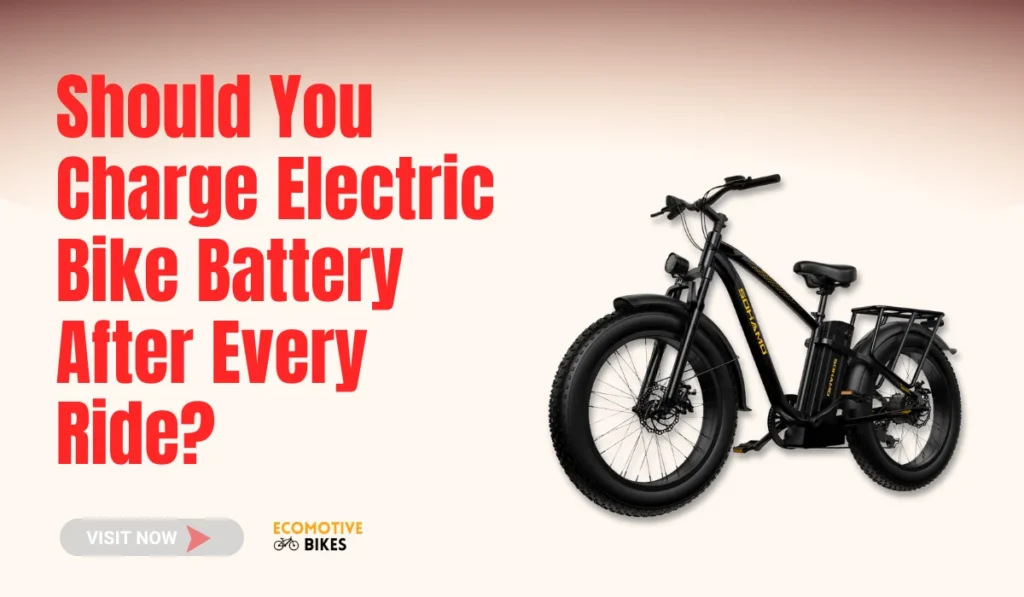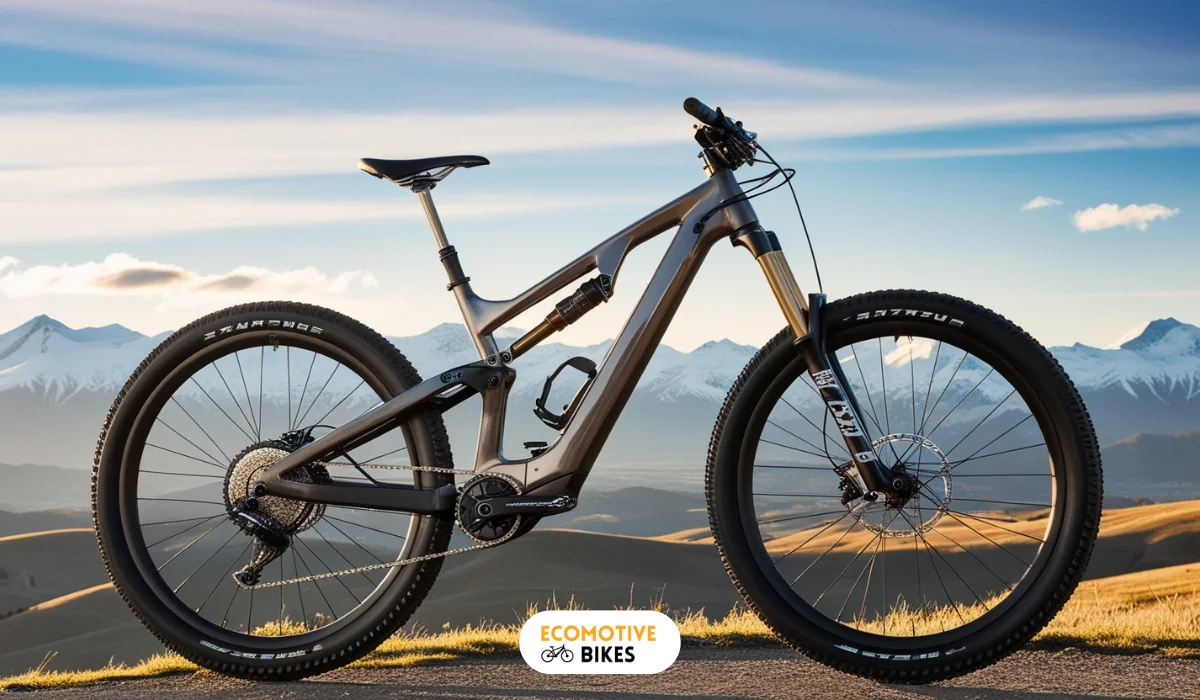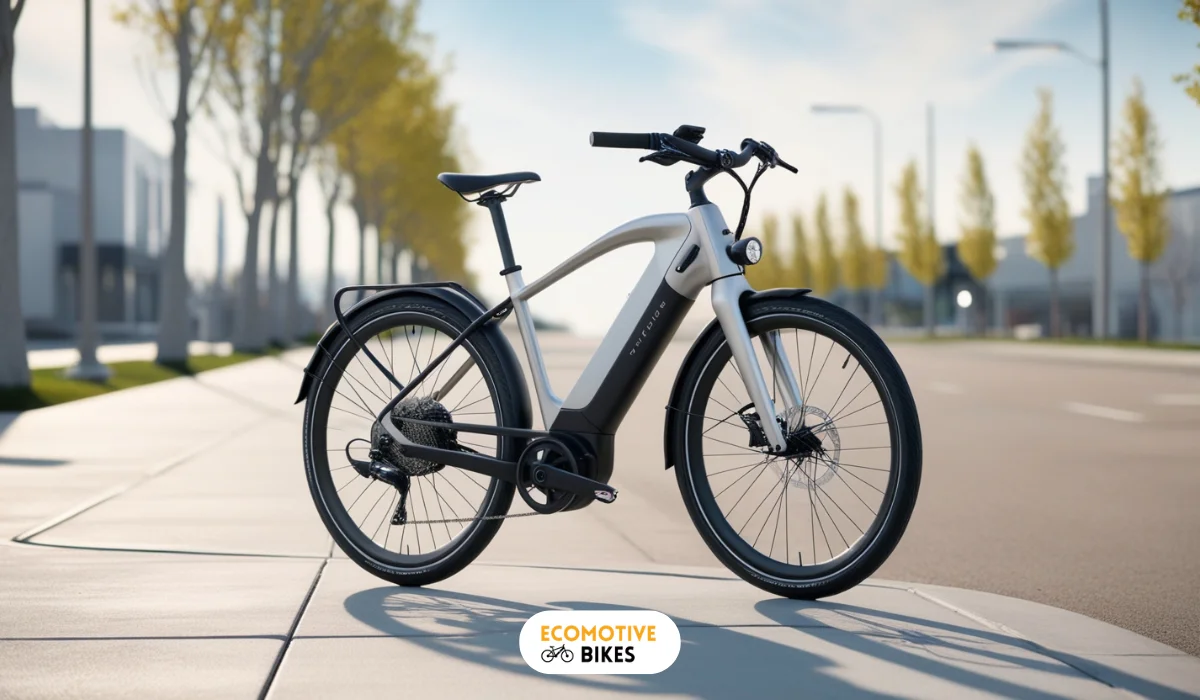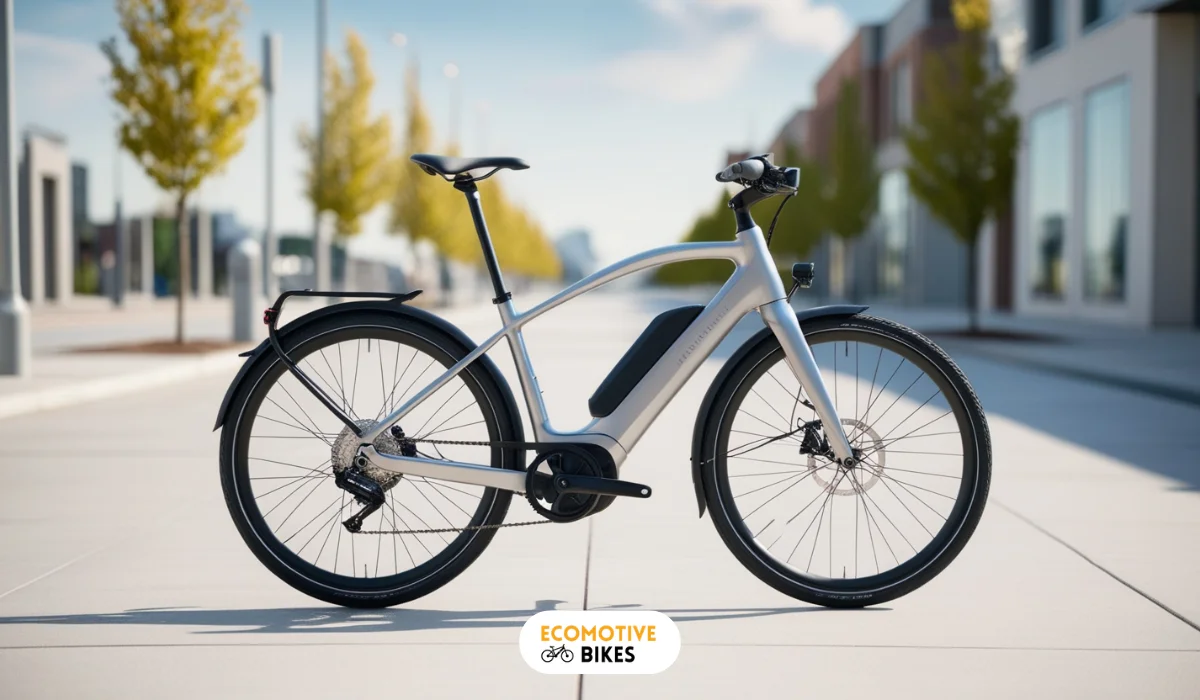Should I charge my electric bike after each ride?
Wondering if you should charge your electric bike after each ride? Explore the best practices for charging e-bike batteries to maximize lifespan and performance.
Table of Contents
Related Articles:
Ever rolled back from an epic e-bike ride, only to be hit with a question? “Should I charge my electric bike after each ride?” This internal debate plagues even the most seasoned e-bikers. Fear not, fellow electric enthusiasts! We’re here to untangle the charging mystery, exploring the pros and cons of frequent charging, busting myths, and revealing the secrets to maximizing your e-bike’s battery life.

What are the types of e-bike batteries?
Most e-bikes rely on lithium-based batteries, known champions for lasting longer with frequent charging. But within the lithium family, there are two main contenders: Lithium-Ion (Li-Ion) and Lithium Polymer (Li-Po) batteries. Each boasts unique characteristics and advantages.
The key question remains: Does the specific type of lithium battery in your e-bike impact how often you should charge it? The answer is yes, to an extent. However, other factors play a bigger role in determining your ideal charging routine. We’ll explore those factors next, helping you unlock the secrets to maximizing your e-bike battery’s lifespan and performance.
| Lithium-Ion (Li-Ion) | Commonly used in e-bikes, known for their reliability and energy density. |
| Lithium Polymer (Li-Po) | Offer higher energy density but may be more sensitive to charging practices. |
| Lead-Acid | An older technology, heavier and less efficient compared to lithium batteries. |
| Nickel-Metal Hydride (NiMH) | Less common in e-bikes due to lower energy density and performance. |
| Nickel-Cadmium (NiCd) | Rarely used in modern e-bikes due to environmental concerns and lower capacity. |
What is the role of Battery Management Systems?
Every e-bike battery relies on a silent guardian – the Battery Management System (BMS). This unsung hero plays a critical role in ensuring your battery’s health and maximizing its lifespan. But what exactly does a BMS do?
Think of a BMS as a control center for your e-bike battery. It constantly monitors factors like voltage, current, and temperature during charging and discharging. This watchful eye prevents potential problems like overcharging, deep discharging, and short circuits. By keeping these threats in check, the BMS safeguards the battery’s health and optimizes its performance for extended use.
How often should I charge the battery?
The battery is likely the most expensive and complex part of your e-bike. While daily charging offers the comfort of a full battery, it can also affect the battery’s lifespan due to limited charging cycles inherent in lithium technology. With proper care, most batteries can reach over 1,000 charge cycles, translating to 3-5 years of regular use. Here are some key things to remember:
- Storage: Even during winter storage, occasional charging is recommended to prevent cell degradation. Future advancements, like solid-state batteries, promise to eliminate this concern.
- Depth of Discharge (DOD): DOD refers to the percentage of battery capacity used. The sweet spot for e-bike batteries lies between 20% and 80% DOD. Regularly draining the battery to 100% or letting it reach critically low levels can shorten its lifespan and performance. By keeping DOD within this optimal range, you’ll extend your battery’s health and ensure peak performance for longer.
What are the safe and efficient charging practices?
- Manufacturer-approved chargers: Always utilize the charging device provided by the e-bike manufacturer. Third-party chargers may not meet the specific safety and performance requirements of your battery.
- Temperature control: Avoid charging your e-bike battery in extreme temperatures, as this can negatively impact its lifespan. Opt for cool, dry locations for optimal charging conditions.
- Safe charging environment: Select a safe location away from flammable materials when charging your e-bike battery.
- Pre-charge voltage checks: Develop the habit of checking the battery voltage before each charging session.
- Avoiding overcharging: Refrain from overcharging the battery, as this can lead to premature degradation. Most modern e-bike chargers automatically stop charging once the battery reaches full capacity.
- Develop a charging routine: There’s no need to charge after every short ride. Wait until the battery reaches 25% or below before plugging in, and choose a time when you’ll be available to disconnect it later.
What strategies must I follow to maximize battery range and lifespan?
By incorporating these additional practices into your e-bike routine, you can further optimize battery performance:
- Frequent top-ups: Consider charging your battery after each ride, particularly for shorter trips. This approach helps maintain the optimal DOD range.
- Partial discharges: Avoid fully depleting the battery before plugging it in.
- Pedal assist efficiency: Utilize lower pedal assist settings whenever possible to conserve battery power and extend your range.
Final Word: Should I charge my electric bike after each ride?
So, here is the answer to the big question: should you change your e-bike battery after every ride? “It depends!” While frequent top-ups won’t hurt (and can even be beneficial for short rides), aiming for the 25% mark before plugging in is a good general rule. Remember, your battery is like a trusty sidekick – treat it well with proper charging practices, and it will reward you with extended range and years of happy e-biking adventures!





